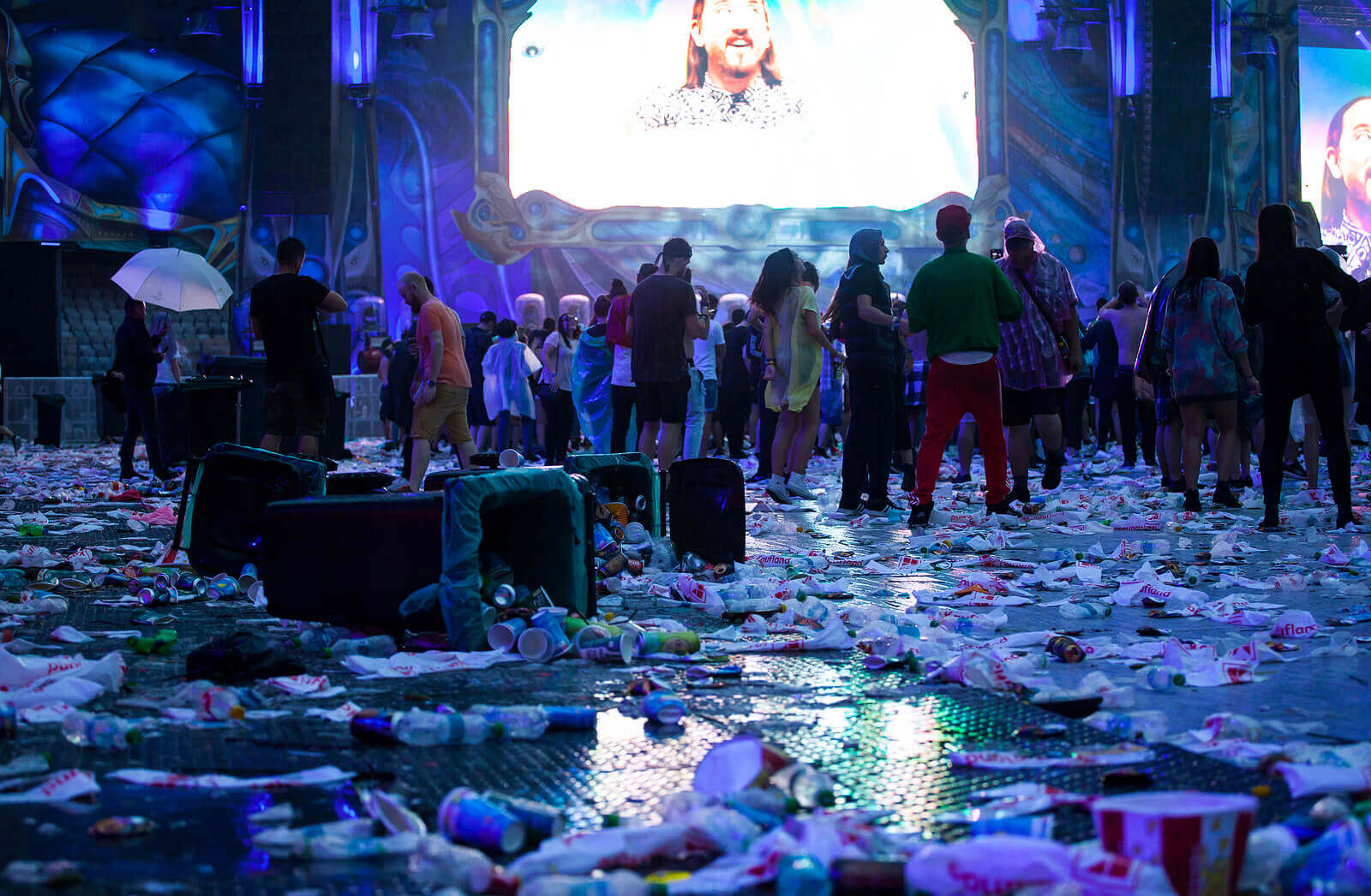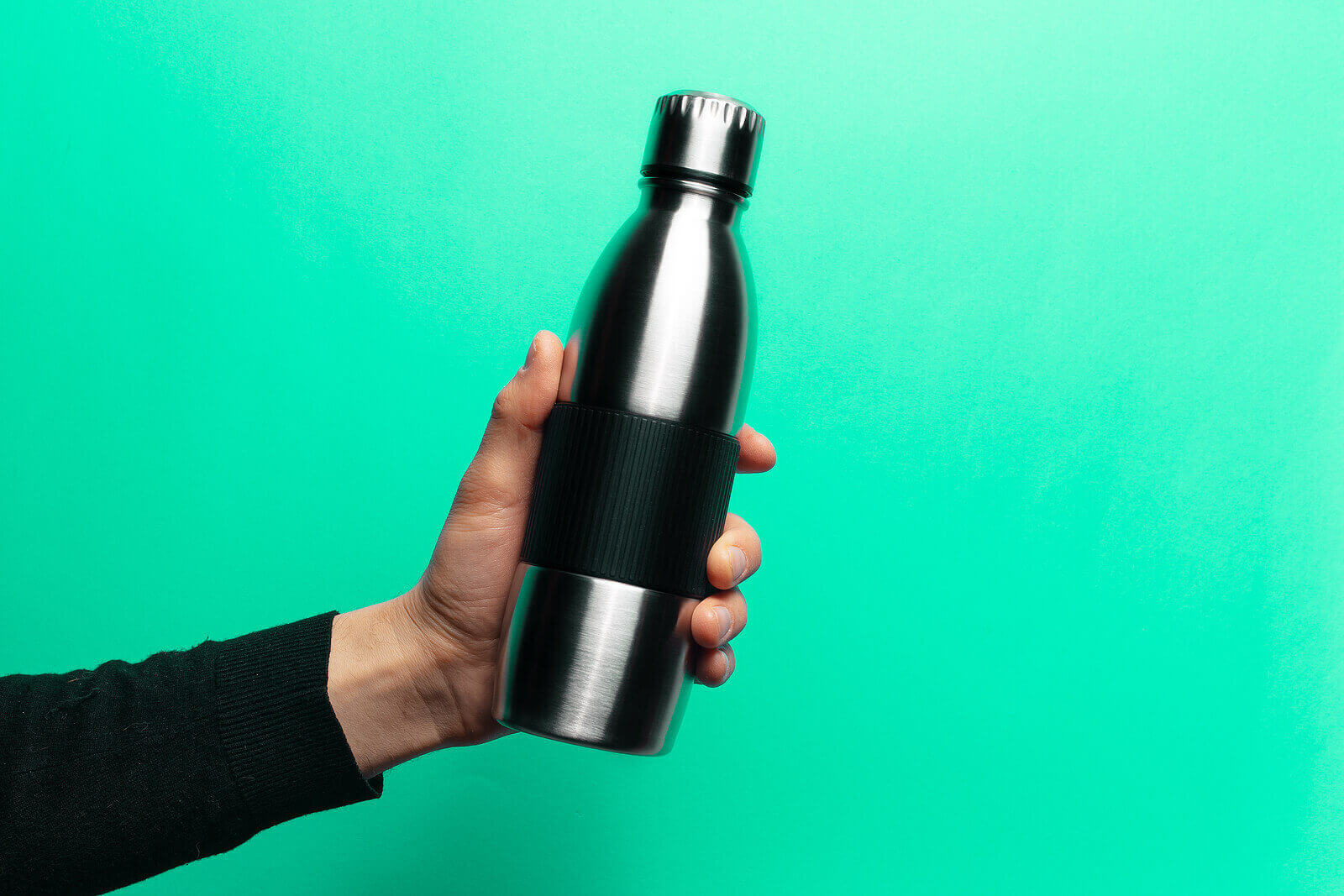As the UK continues to emerge from the most severe phase of COVID-19 restrictions cautiously, it looks like festivals are back on the menu, along with other crowded events like full-capacity sporting fixtures, cinema and theatre.
But with large crowds comes lots of litter. Waste is an unfortunate inevitability of all major events.
Festival waste management is a particular challenge as there are often relatively few places to dispose of litter while the event is going on.
For a truly sustainable festival, you want to leave no waste behind.
This article will look at ways to host and attend a zero-waste festival, including how organisers can cope with waste clearance and how individuals can reduce the amount of rubbish they generate.
How much waste is produced at festivals?
Festival waste management is a logistical nightmare. You can prepare the stage, the electronics, even the catering in advance.
Still, litter is a ‘live’ problem as festivalgoers generate rubbish from the moment they arrive on-site until they head home at the end.
Vision: 2025 is a non-profit collaboration of outdoor events industry associations with a stated aim to drive towards ‘net zero’ festivals.
In February 2020, just days before the first UK Coronavirus lockdown, the group published the new edition of their report, The Show Must Go On.
This report found that in a normal year, UK music festivals are responsible for:
- Nearly five million festivalgoers.
- 25,800 tonnes of waste.
- 24,261 tonnes of carbon dioxide (or equivalent greenhouse gases).
- 5 million litres of water consumed.
- 7 million litres of fuel used.
Waste per person per day is down from 2014 levels by nearly 30 per cent, but still stands at 2kg — that’s roughly double the amount of waste each person generates in a day spent at home.

What impact does festival waste have on the environment?
A large festival can have a major impact on the environment in a variety of ways. Over the course of five days, the Glastonbury Festival Recycling Centre handles around 2,000 tonnes of waste materials — a quantity comparable with that of a city.
With 200,000 attendees, if each person at Glastonbury has a daily waste output that’s double the household average, that’s the equivalent of 400,000 people — about the same as the population of Manchester and almost as many as the city of Leeds.
In 2018, the festival managed to reuse or recycle half its waste and composted an astonishing 132 tonnes of food waste alone — this was despite them having handed a general waste bag and a recyclables bag to every reveller as they arrived on-site.
Read more about Glastonbury’s environmental impact in our blog ‘How eco-friendly is Glastonbury Festival?‘
How can I reduce my waste at a festival?

There are plenty of ways to cut down on the amount of waste you generate and the amount you leave behind at a festival.
Always remember the three Rs: Reduce, Reuse, Recycle. If you can’t avoid producing waste, try to make sure it is reusable or recyclable to avoid sending anything to landfill sites.
Avoid single-use packaging
We should all be using less single-use packaging wherever possible, and that includes festivals.
Resist the urge to think, “it doesn’t matter, it’s only for a weekend”. We are all, each of us, responsible for our own actions.
Besides, cloth tote bags will withstand the rigours of a busy festival campsite better than flimsy disposable plastic carrier bags, and a refillable water bottle means you only need to find a tap — not a shop charging festival prices — to stock up on fresh drinking water over the weekend.
Replace wipes with a cloth and bowl
Wet wipes are convenient, but they are not eco-friendly.
Wipes don’t degrade as quickly as tissue or toilet paper, but they’re also not reusable — the worst of both worlds.
If possible, substitute a reusable cloth instead. You can get travel bowls with secure lids if you need to transport water from a central shower block or bathing area back to your tent to wash in privacy.
Alternatively, if you must use disposable, opt for tissue or strong kitchen roll. This will decompose quickly once it’s wet, so there’s not much concern about throwing it in the general waste bins.
Use biodegradable festival makeup

Eco-friendly festival makeup helps to reduce your negative impact on the environment for a guilt-free weekend of partying.
You can buy biodegradable makeup from big brands and Etsy independents alike.
To find out more, read our blog ‘Zero Waste Makeup: A Beginner’s Guide‘.
Collect litter
It only takes a moment to pick up a piece of litter, so if you’re attending a festival with bins or bags available, and you spot a discarded bottle or wrapper, pop it in the nearest bin.
This is especially helpful with lightweight waste like plastic wrappers, which are likely to blow away out of the festival area before clean-up crews have a chance to get to them and could therefore pose a threat to nearby wildlife.
Take everything home with you
Taking your litter with you when you leave is a more significant contribution than you might imagine.
In an article encouraging revellers to be Zero Waste Festival Goers, Leeds Festival warns that “tents can’t be recycled and anything left in the campsite field ends up going to landfill or incineration, polluting the environment”.
By taking your litter — and your tent — with you when you leave, you can reuse where appropriate, recycle what you can, and ensure anything else is disposed of sensibly.
Closing thoughts
Nobody wants to stop festivalgoers from having fun, but reducing waste doesn’t have to be difficult.
Every time you Reduce, Reuse or Recycle, you help the festival organisers with their waste disposal strategy for a more sustainable festival.
A 100 per cent zero-waste festival might be a pipe dream, but every little helps — especially when 200,000 people work together.
Next time you buy tickets to a UK music festival, check whether the organisers have a Zero Waste Pledge on their website, and make sure you do your part if so.
